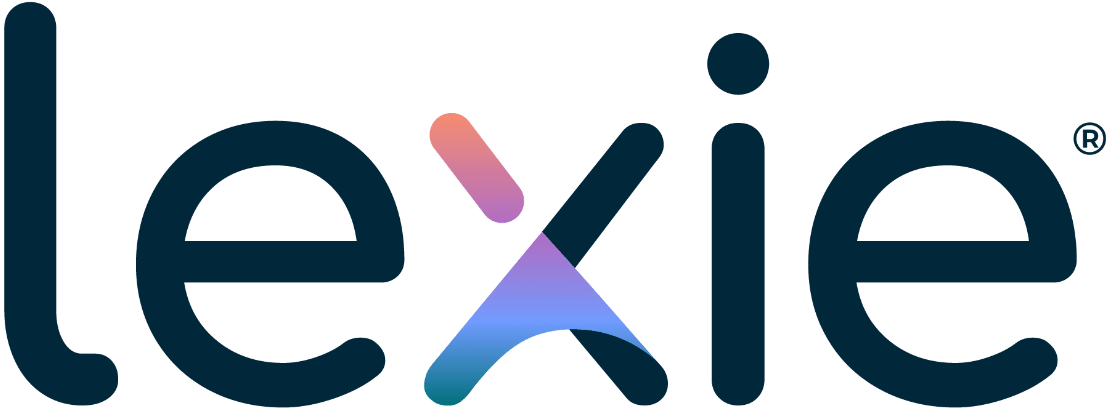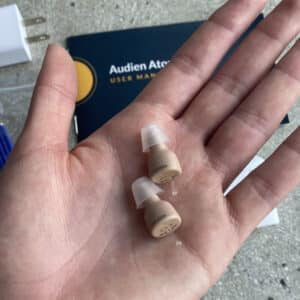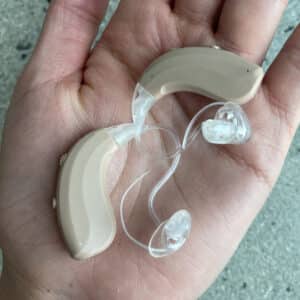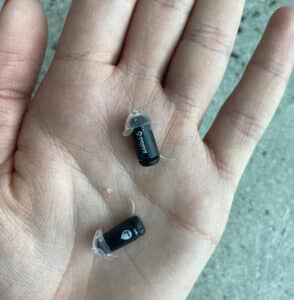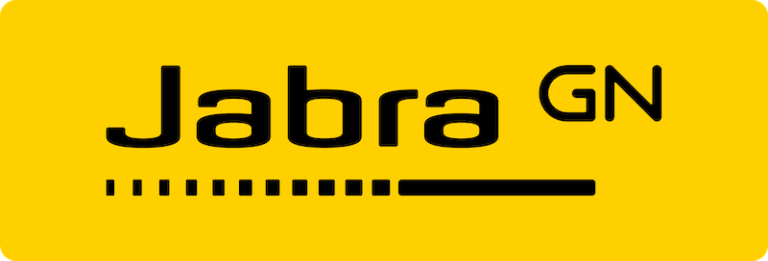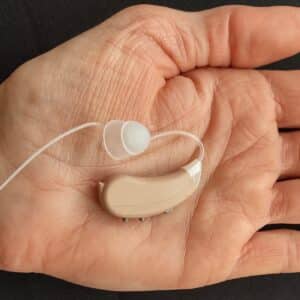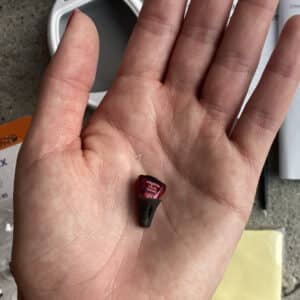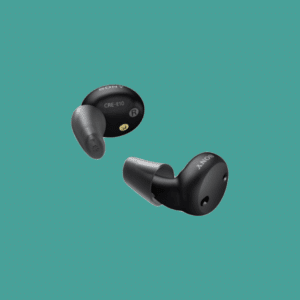Audien sells three lightweight, in-the-canal (ITC) hearing aids: the Atom, Atom 2, and the Atom Pro. The company also sells two behind-the-ear hearing aids, the Audien Ion and the Audien Ion Pro. Although the ITC hearing aids don’t have a lot of features, such as Bluetooth, we found that Audien hearing aids are the least expensive of several brands, starting at only $99 per pair, winning the “Most Affordable” hearing aid on this list.
The 7 Most Affordable Hearing Aids of 2025
Key Takeaways
- Our top three recommendations for the best affordable hearing aids are Audien Hearing for the lowest starting price, MD Hearing for the most versatile offerings, and Eargo for the best invisible hearing aids.
- While some hearing aids cost up to $7,000 per pair, the best low-cost hearing aids on this list have starting prices between $99–$1,540 and offer both quality and personalized customer care.
- Don’t let price stop you from getting treatment for hearing loss. Financial aid, discounts, and payment plans can help you pay for hearing aids.
- On August 16, 2022, the U.S. Food and Drug Administration (FDA) finalized its ruling on over-the-counter (OTC) hearing aids being legally offered for sale without a medical exam, prescription, or professional fitting. [1] Food and Drug Administration. Medical Devices; Ear, Nose, and throat Devices; Establishing Over-the-Counter Hearing Aids. August 17, 2022. Found on the internet at: https://www.federalregister.gov/documents/2022/08/17/2022-17230/medical-devices-ear-nose-and-throat-devices-establishing-over-the-counter-hearing-aids
- This new FDA ruling, which went into effect on October 17, 2022, has created more affordable hearing aid options.
If you’re buying hearing aids for yourself or a loved one, you already know they can be expensive. Prices for the best hearing aids on the market can run up to several thousand dollars per pair. But in October 2022, hearing aids became more accessible, when the FDA approved over-the-counter hearing aids. These hearing aids are an affordable option for those with mild hearing loss and don’t require a doctor’s visit and prescription to purchase.
How can you save money and find the best value hearing aids for your hearing loss? In this review, we’ve ranked the seven best affordable hearing aids on the market based on our extensive research. The best low-cost hearing aids include Audien, MD Hearing, Eargo, Jabra Enhance, and others mentioned in this guide.Read about why these brands carry the best budget hearing aids, and learn about the features each one has to offer. We’ll also discuss how you can be a smart shopper and choose a quality hearing aid within your budget.
We chose Audien as our top pick for the Most Affordable Hearing Aids due to the brand’s unique combination of high quality and low cost. Audien stands out for offering an affordable alternative to other high-profile brands while producing all of their hearing aids in an FDA-registered facility, ensuring their products meet the highest standards.
Our picks for the most affordable hearing aids in 2025
- Audien: Most Affordable
- MDHearing: Most Versatile Hearing Aid
- Eargo: Best Invisible Hearing Aids
- Jabra Enhance: Best Customer Support
- Lexie: Most User-Friendly
- Signia: Most Affordable Prescription
- Sony: Best Sound Quality
Comparison of the most affordable hearing aids, as of January 2025
| Price per pair | $99–$489 | $297-$699 | $799–$2,950 | $995-$1,995 | $799–$999 | $1,475 starting price |
$999–$1,299 |
| Type of hearing loss | Mild to moderate | Mild to moderately severe | Mild to moderate | Mild to moderate | Mild to moderate | Mild to moderate | Mild to moderate |
| Battery | Rechargeable | Rechargeable | Rechargeable | Rechargeable | Rechargeable B2 |
Disposable | Rechargeable, Disposable |
| Bluetooth | No | No | Yes, LINK by Eargo only | Yes | Yes | No | Yes, E10 only |
| Warranty | 1 year | 1 year 2 years for Volt Max |
1 year 2 years for Eargo 7 |
1–3 years | 1 year | Dependent on hearing clinic | 1 year |
| Financing | No | Yes | Yes | Yes | Yes | Dependent on hearing clinic | Yes |
Most affordable hearing aids in 2025
Our expert take on Audien Hearing
Audien hearing aids are the lowest-priced devices on this list, with the Audien Atom costing $99 per pair and the most expensive BTE Series at $689 per pair. This is still less expensive than most over-the-counter hearing aids. These OTC hearing aids are easy to buy; you can place an order online with a prescription from a doctor.
There are a couple of things we really like about Audien hearing aids. The devices include rechargeable batteries, and some models have a battery life of up to 24 hours before requiring a recharge. Since you don’t need a hearing test or a prescription to buy Audien devices, they’re a great fit for someone with mild to moderate hearing loss who is looking for a budget-friendly option.

We think it is important to point out that buying the most affordable hearing aids on this list comes with drawbacks. Audien’s ITC devices are not equipped with Bluetooth connectivity, and they don’t have a smartphone app companion. These devices are pretty low-tech when compared to the other options, so it is important to consider what features you are willing to sacrifice to keep your costs low.
For more information about the company, read our Audien hearing aids review.
Our expert take on MDHearing
MDHearing aids are affordable, over-the-counter devices with a few more features than the least expensive brand. Five different models are available, and each cost between $297 and $699.98.
Every MDHearing device includes feedback cancellation (to reduce whistling noises caused by holding a phone or other object close to your hearing aid) and digital noise reduction (to block out background sounds). The NEO and NEO XS have only one listening program, but the Air, Volt, and Volt Max come with four preset hearing profiles.
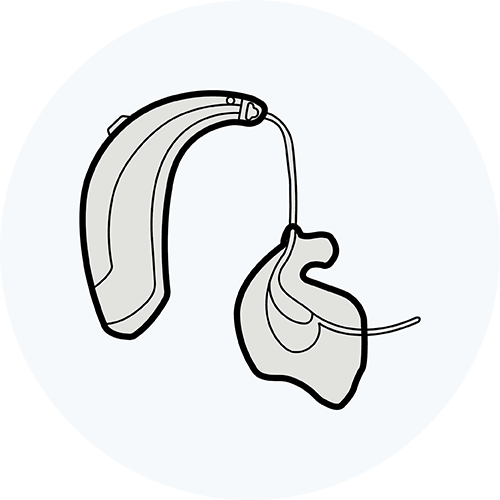
We specifically appreciate the directional microphones in the Volt and Volt Max models, and that all of MdHearing’s devices use rechargeable batteries.
Check out our MDHearing review to learn more.
Our expert take on Eargo
Eargo is one of the more expensive over-the-counter hearing aids on this list, costing between $799 and $2,950 per pair. Still, we’ve included this option because some of these devices have more advanced features, including Bluetooth connectivity in the LINK by Eargo and the ability to change between different hearing profiles using Eargo’s smartphone app.

All of Eargo’s hearing aids include noise-reduction technology, directional microphones, and rechargeable batteries. We specifically appreciate how discreet these devices are and think they would be a great fit for someone who would prefer a less obvious hearing aid device.
For more information, check out our in-depth Eargo hearing aids review.
Our expert take on Jabra Enhance
All Jabra Enhance Select hearing aid prices are competitive. The base model (Jabra Enhance Select 50R) starts at $995 per pair (basic package) to $1,195 per pair (premium package). The most expensive model (Jabra Enhance Select 300) is $1,995 per pair for the premium package, about $2,600 less than the average pair of hearing aids, according to the White House.
The 100-day trial period adds even more value to the price of Jabra Enhance Select hearing aids.
Price differences in each model reflect the battery type and level of technology.
Jabra Enhance Select 50R and 100 have rechargeable batteries, and the Jabra Enhance Select 300 has a rechargeable battery plus the most advanced hearing technology the company offers.
All three models offer Bluetooth streaming and the ability to make remote adjustments using the free Jabra Enhance Select app.

The Jabra ITE model, the Enhance Plus, is priced lower at $799 because it’s a smaller model with fewer perks. While it comes with Bluetooth streaming and a rechargeable battery, you don’t get the audiology team support, and it only has a 45-day trial period.
For more information, read our in-depth Jabra Enhance hearing aids review.
Our expert take on Lexie
The average price for OTC hearing aids is about $1,600 per pair—$3,000 less than the average price of prescription hearing aids.
Only a few OTC hearing aid brands offer self-fitting models under $1,600, and Lexie is one of them. All three Lexie hearing aid models have FDA clearance as self-fitting devices.
The Lumen, a behind-the-ear model with telecoil and disposable batteries, is priced at $799 per pair. When you initially set up the hearing aids, the Lexie app will walk you through a hearing test, using the results to customize your devices to your hearing loss profile.
With the Lumen, you also have six preset listening environments to choose from. You can adjust both the volume and listening environment using buttons on the hearing aid or the Lexie app on your smartphone or tablet.
Lexie also makes two OTC hearing aids, the B1 and B2 Plus, that allow you to make fine-tuning adjustments. In addition to selecting your listening environment, you can change the bass/treble balance, left/right balance, and the amount of amplification from different directions. These adjustments require the Lexie app; they can’t be manually adjusted with buttons on the devices. The main difference between these two models is that the B1 comes with a disposable battery, and the B2 Plus allows you to stream phone calls with an iPhone device and comes with an on-the-go charging case.

After testing the B2 Plus, our tester said:
“The app is user-friendly and offers great resources. The settings are more dynamic than brands like MDHearing and Audien, but they are not overwhelming due to the app’s layout.”
Explore more in our Lexie review.
Our expert take on Signia
The brand’s most affordable hearing aid model is the Signia Silk X. While prices vary by distributor, Signia Silk X hearing aids can start as low as $1,540 per pair. They come in performance levels ranging from 1X to 7X, with 7X being the most advanced. If you’re looking for hearing aids at the lower end of the price range, consider opting for a lower performance level, such as 1X or 3X.
The completely-in-canal (CIC) Signia Silk X is the brand’s smallest and most discreet hearing aid model and is designed to treat mild to moderate hearing loss. Unlike some of the brand’s other models, the Silk only comes with disposable batteries and does not offer Bluetooth capabilities.
Customization options are also limited, but this model does have a directional microphone and noise-reduction technology. To find the best fit, Silk comes with four sizes of silicone sleeves, which snap onto the end of the device that goes into your ear. Unlike other prescription models, Silk X doesn’t require a lengthy custom fitting process. This can save time, but you may have trouble finding the perfect fit.
Make sure you pay attention to whistling or feedback noise, which can indicate an improper fit. Note: The Silk is the only model from Signia that’s not water-resistant, so take extra care around water and moisture.
Signia also produces Pure, Styletto X, Insio, Active, and Motion hearing aids, which have higher starting prices and more advanced features than the three models featured above.
Read more about all Signia hearing aid models in our Signia hearing aids review.
Our expert take on Sony
Sony hearing aids are available in two models. The more discreet, in-the-canal C10 is a self-fitting hearing aid pair that allows users to make audio adjustments through the Bluetooth-connected app. At the same time, the hearing aids are capable of evaluating the surrounding environment and making automatic adjustments, including noise reduction. The earbud-style E 10 runs on a rechargeable battery with an average life of 26 hours and has Bluetooth streaming capability. Like the C10, the E10 also automatically adjusts the user’s settings to accommodate changes in the environment. Both Sony hearing aid models are available over-the-counter without a prescription.
How we test the best affordable hearing aids
Our rigorous testing process for affordable hearing aids aims to provide our readers with reliable information about the best hearing aids available. We begin by conducting extensive research and consulting with audiologists and geriatric care experts to understand hearing aid users’ needs and the latest developments in the field.
Next, we look into customer feedback, analyzing thousands of trusted third-party websites to identify common concerns and preferences. We then supplement this information with targeted surveys to uncover specific experiences and challenges hearing aid users face.
To ensure a diverse range of options, we focus on brands that offer affordable hearing aids without compromising on quality or essential features. We consider price, hearing loss type, available features, and customer support. Then, we personally test the hearing aids we feature to ensure they meet our standards for fit, effectiveness, and ease of use.
To learn more, read about our methodology.

We’re testing new hearing aids all the time, so our reviews are always changing. We test new hearing aid models as they come out to provide you with the most updated information possible. Check back here for updates.
Pros and cons of affordable hearing aids
While saving money on hearing aids is important to most shoppers, it’s also wise to consider what you might be giving up if you pick a budget hearing aid. Let’s look at the advantages and potential disadvantages of the most affordable hearing aids.
Pros
- Lower up-front cost: According to Johns Hopkins Medicine, people who need hearing aids wait, on average, 10 years before getting help for hearing loss, and one of the biggest reasons people wait is the high cost associated with hearing aids. [4] Johns Hopkins Medicine. The Hidden Risks of Hearing Loss. Found on the internet at https://www.hopkinsmedicine.org/health/wellness-and-prevention/the-hidden-risks-of-hearing-loss Our team’s survey of hearing aid users also found hearing aid cost was the number one obstacle to getting them.
- FDA-approved OTC hearing aids: The historically high price of hearing aids is coming down in part because the FDA finalized OTC hearing aid regulations in August 2022, which has led to increased competition and innovation in the marketplace. [5] U.S. Food and Drug Administration. FDA Finalizes Historic Rule Enabling Access to Over-the-Counter Hearing Aids for Millions of Americans. Aug. 16, 2022. Found on the internet at https://www.fda.gov/news-events/press-announcements/fda-finalizes-histo As more affordable options continue to become available to consumers, more people will be able to access them.
- Online testing, purchasing, and customer support: The entirely online/remote process keeps costs down for consumers and hearing aid companies alike.
Cons
- Limited technology: While features like noise cancellation and directional microphones are now offered in affordable devices, top-of-the-line sound technology is reserved for more expensive hearing aid models.
- Not fully customizable: Budget hearing aids typically cannot be completely customized to your individual hearing loss.
- Not suitable for severe hearing loss: High-powered devices that treat severe and profound hearing loss are generally more costly due to the increased circuitry, level of customization needed, and professional adjustment required.
- In-person support may not be available: Low-cost hearing aids often do not come with the option of in-person support from an audiologist or hearing aid specialist.
- Not prescription: Most budget hearing aids are not prescription hearing aids. If you require prescription hearing aids, you’ll likely need to spend a bit more.
Dr. Candice Ortiz-Hawkins, clinical audiologist at Capital Institute of Hearing and Balance in Silver Spring, Maryland, believes new hearing aid users or those with other medical conditions typically need more support offered through audiologists’ clinics.
“Those who require more follow up tend to be new hearing aid users; those with multiple medical conditions, including cognitive decline, low vision, or dexterity issues, who will have difficulty caring for and managing their hearing aids,” said Ortiz-Hawkins.
The best value hearing aid brands on our list that offer in-person adjustments and customer support are Audicus and Signia. The other companies offer adjustments and other services only by phone, app, or video.
How much do hearing aids cost?
The average cost of hearing aids is $99–$7,000 per pair, based on our team’s research. But hearing aid prices can vary widely depending on features, style, and technology.
OTC hearing aids are often more affordable than prescription hearing aids, and they can be a great option if you have mild to moderate hearing loss and don’t feel you need in-person support.
If this describes you, choosing one of the best value hearing aid brands reviewed here can save you thousands of dollars.
Most affordable hearing aids from lowest to highest price, as of January 2025
Brand | Cost |
|---|---|
| Audien | $99–$689 |
| Go Hearing | $169–$499 |
| MDHearing | $297-$699.98 |
| Lexie | $799–$999 |
Eargo | $799-$2,950 |
Jabra Enhance | $799-$1,995 |
| Signia | $1,475 |
Let’s take a look at why some hearing aids cost more than others.
Factors that affect hearing aid price:
1. Degree of hearing loss
Lower-cost hearing aids may not be a good option for people with severe or profound hearing loss. This is also true for those who experience hearing loss due to an injury or medical condition in the ear.
In either case, you may need in-person help from an audiologist or ear, nose, and throat (ENT) doctor to customize and adjust your hearing aids for your specific ear anatomy and hearing needs. While a few OTC brands offer devices to address severe hearing loss, most companies that specialize in severe and profound hearing loss are sold through audiologists’ clinics.
Signia is our team’s pick for the most affordable hearing aid in this category.
2. Availability of in-person support
When purchasing hearing aids through a clinic, you will typically pay more than you would buying them online from a hearing aid manufacturer. But you won’t just be buying the hearing aids; the price often includes ongoing in-person support in the form of adjustments, cleaning, and other maintenance.
Some hearing care clinics provide longer and more comprehensive warranties than OTC hearing aid companies. They may also offer service plans that include cleaning and maintenance. Both warranties and service plans could include additional fees, so it’s important to ask for details before making a purchase.
“Another option is to purchase hearing aids from an audiologist who offers an unbundled pricing model. This allows for lower up-front costs for the hearing aids and fitting services,” said Ortiz-Hawkins. “After the initial fitting, you pay for services only as you need them. This can save you up to a couple of thousand dollars.”
The additional cost of in-person support may be worth it for people who are new to hearing aids, are not comfortable making adjustments on their own, or just want the extra help that a hearing specialist can provide.
3. Level of technology
High-tech hearing aids cost more than those with fewer features. These technologies can include options such as:
- Activity tracking: Counts steps and time spent in conversations
- Artificial intelligence (AI): Provides superior sound and even fall detection
- Bluetooth streaming: Allows you to stream TV shows and phone calls and adjust your hearing aids with a smartphone app
- Rechargeable batteries: Companies such as MDHearing only offer rechargeable batteries, which cost more up front, but keep in mind you won’t have to buy (or change) disposable batteries in those models.
- App to pair to: Some OTC hearing aid brands, such as Eargo, have Bluetooth connectivity, allowing users to adjust their hearing aid settings from their smartphones. This added functionality comes with an increase in the initial cost.
- Custom programming: Hearing aids that allow users to adjust their settings to suit their needs rather than switching between set programs tend to cost a little more.
The good news is the FDA has finalized a rule to grant access for hearing aids that can be sold over-the-counter (OTC) without a prescription or an audiologist’s exam. [2] The White House. FDA Takes Action to Deliver Lower-Cost, Innovative Hearing Aids to Millions More Americans. Found on the internet at https://obamawhitehouse.archives.gov/blog/2016/12/07/fda-takes-action-deliver-lower-cost-innovative-hearing-aids-mil Lower-priced OTC hearing aids are now available online and in stores where health devices are sold, such as Best Buy, CVS, Walgreens, and Walmart.
Why are hearing aids so expensive?
A variety of factors influence the price you’ll pay for hearing aids. For example, audiologists usually charge more for in-person support than specialists who help you with your hearing aids online or over the phone.
This is because in-person, brick-and-mortar clinics have more overhead costs compared to online companies, such as rent, maintenance, and staffing (audiologists also have more specialized medical training).
Does Medicare or insurance cover hearing aids?
Unfortunately, Medicare doesn’t cover hearing aids. Medicare A and B do not currently cover hearing exams not requested by a physician, hearing aid fittings, or hearing aid supplies, although NCOA is a strong advocate for Medicare coverage of hearing aids. [6] Medicare.gov. Hearing Aids. Found on the internet at https://www.medicare.gov/coverage/hearing-aids
If you have Medicare Part C (Medicare Advantage), it may pay for some expenses related to hearing aids. Private insurance plans sometimes offer partial or full coverage as well. Contact your insurance provider for more information.
If you qualify for Medicaid, it will often pay for part or all of the cost of hearing aids, but it depends on your state. The Hearing Loss Association of America provides a detailed list of Medicaid hearing aid coverage by state.
How to save on hearing aid costs
Along with shopping for affordable hearing aid brands, there are other ways to find the best hearing aid prices:
- Look for sales: The holidays are a great time to buy hearing aids on sale. Brands like MDHearing and Eargo offer great regular savings.
- Ask about payment or membership plans: Third-party lenders like CareCredit offer good financing options, while membership plans like the one Audicus offers covers “leased” devices, upgrades, and maintenance packages.
- Use your HSA or FSA: Health savings accounts (HSA) and flexible spending accounts (FSA) distributed through your employer can help pay for hearing aids and batteries. [7] Healthcare.gov Health Insurance Marketplace. What’s a Health Savings Account? Found on the internet at https://marketplace.cms.gov/outreach-and-education/health-savings-account.pdf
- Purchase through a discount retailer: Try shopping through a discount retailer like Yes Hearing.
- Pay in full: You may be able to request a discount if you pay full price.
Hearing aid financing
Thankfully, consumers now have many options for financing their hearing aid purchases. Most OTC hearing aid manufacturers and third-party retailers offer financing, and every hearing care clinic we’ve spoken with also offers the option to finance prescription hearing aids.
The following retailers and hearing aid companies were offering financing as of January 2025:
Hearing aid brands with financing options
- Eargo
- Go Hearing
- Jabra Enhance
- Lexie
- Lucid
- MDHearing
- Sony
Hearing aid retailers offering financing
- Best Buy
- Hyvee
- Target
- Walgreens
- Walmart
- Victra Verizon
Organizations that provide financial assistance for hearing aids
Cost shouldn’t stand in the way of getting treatment for your hearing loss. Fortunately, a number of non-profit organizations may be able to help you pay for hearing aids. Here’s a list to get you started.
Some of the websites we’ve outlined also provide links to other associations that give financial assistance for hearing aids.
Veterans Affairs
If you’re a veteran and receive general VA health care, you can get hearing exams, hearing aids, batteries, hearing implants, and a variety of hearing assistive technology, such as remote microphones, media streamers, and hearing aid-compatible smoke alarms, at no cost.
The VA will also repair hearing aids purchased by veterans in the private sector free of charge. Go to the Veterans Affairs website to learn more about these benefits. [8] U.S. Department of Veterans Affairs. Rehabilitation and Prosthetic Services. Found on the internet at https://www.prosthetics.va.gov/psas/Hearing_Aids.asp
Discount networks
Networks such as Yes Hearing sell hearing aids and service packages at prices up to 30% lower than clinics. The discount network will lock in the best price they can offer for your hearing aids and then connect you with a local clinic, where you can get a hearing evaluation, purchase your hearing aids, and receive service and support.
Member benefits
AARP members can receive a 20% discount on hearing aids along with other hearing benefits through a program with HearUSA.
Lions Club members can also get hearing aids at a discounted price. See their website for details.
Hearing Aid Project
Developed by Hearing Charities of America, the Hearing Aid Project provides hearing evaluations and refurbished hearing aids at little or no cost. If you are a U.S. resident, have been diagnosed with hearing loss by an audiologist, and do not have health insurance that covers hearing aids, you may qualify for devices from the Hearing Aid Project.
Go to the website to complete an application and get a list of national, state, and local resources that help pay for hearing aids.
Other resources
The following organizations provide resources and links to help you get financial assistance for hearing aids:
- American Speech-Language Association
- Hearing Aid Project
- Hearing Industries Association
- Hearing Loss Association of America
- National Institute on Deafness and Communication Disorders
Lastly, check out BenefitsCheckUp® to see what other benefits you’re eligible for.
What to look for in the best affordable hearing aids
| Attribute | Description |
|---|---|
| Tips and domes for the best fit | A variety of tips and domes will help you find the best fit with hearing aids that aren’t custom-made for your exact ear anatomy. Eargo and Signia, along with all makers of behind-the ear (BTE) and receiver-in-ear (RIC) devices, offer several sizes of tips and domes. |
| Free trial period | In most states, hearing aid companies must offer a trial period of at least 30 days. During the trial period, you can return the hearing aids and receive a full or partial refund if you decide they aren’t a good fit for you. |
| Warranty | Of our hearing aid survey respondents, 62% needed to have their hearing aids repaired during the warranty period. Most companies provide a warranty between one and three years from the date of purchase, but not all warranties are created equal. Check the length and type of warranty before purchasing hearing aids, whether the warranty can be extended and, if so, how much the extended warranty costs. |
| Bluetooth capability | Remember Bluetooth connectivity and Bluetooth streaming are two different things. Some CIC models (such as Eargo) provide Bluetooth connectivity but not streaming. This means you can connect wirelessly to your charger and/or smartphone app, but you won’t be able to take phone calls or listen to music with your hearing aids. If using your hearing aids to talk on the phone or stream music is important to you, make sure Bluetooth streaming is supported in a hearing aid you’re interested in before purchasing it. |
| Smartphone apps | Newer hearing aid technology has made it possible to use your smartphone to adjust the volume and settings on your hearing aids without even touching them. If you’re comfortable with technology and enjoy using apps on your phone, this may be a feature you’ll appreciate. |
| Noise reduction | Also called digital noise reduction, devices with this feature help you focus on conversations and other nearby sounds by limiting background noise. Noise reduction was the most important feature hearing aid customers said they wanted in our team’s survey, and luckily, most hearing aids include it in even the most basic models. |
| Directional microphones and feedback cancellation | Directional microphones inside the hearing aid pick up and amplify sounds in front of you to help you hear and respond to conversations more easily. Feedback cancellation cuts down on the whistling sound that was common in older hearing aids when they were held near a phone or other device. Both of these features are commonly included in basic hearing aid models. |
| Telecoil | A T-coil, or telecoil, enables the use of hearing aids in public places such as airports and houses of worship, and in theaters fitted with specialized hearing assistive technology called a hearing loop. While many modern hearing aids include a telecoil, CIC devices like Eargo hearing aids are so small they often do not. The Lexie Lumen, a BTE model, does come with a telecoil. |
| Battery type | According to our team’s survey, most hearing aid users prefer rechargeable batteries over disposable batteries. Rechargeable batteries were the second-most important feature to customers (right behind digital noise reduction). The advantage of rechargeable batteries is being able to place them in the charging case at night before going to bed and having them ready in the morning. On the other hand, with disposable batteries you don’t have to be without your hearing aids while they charge; simply replace the batteries as needed. |
Where to shop for affordable hearing aids
When searching for the best value hearing aids, explore various options to find the best fit for your needs and budget.
Start by researching online retailers for competitive pricing and a wide selection of products. Consider checking with local audiology clinics or hearing aid specialists, as they may have discounted options or payment plans available.
Another option is to look into government assistance programs or nonprofit organizations that provide financial assistance or low-cost hearing aids to those in need. Finally, inquire about insurance coverage or reimbursement options through your health care provider. By exploring these avenues, you can find the best inexpensive hearing aids for your budget.
Are budget hearing aids a good fit for you?
While everyone wants to save money, the least expensive hearing aids aren’t a good fit for every person. There are two reasons why you may not want to choose the cheapest hearing aids.
1. You have sudden or profound hearing loss
If you are experiencing a sudden loss of hearing, have recently had an injury or illness that may be related to your hearing loss, or have pain in one or both ears, be sure to contact your doctor or other health care provider for an in-person evaluation.
In these cases, purchasing hearing aids online without an exam by a hearing professional could result in money wasted on devices that don’t effectively treat your hearing loss, as well as underlying conditions going undiagnosed and untreated.
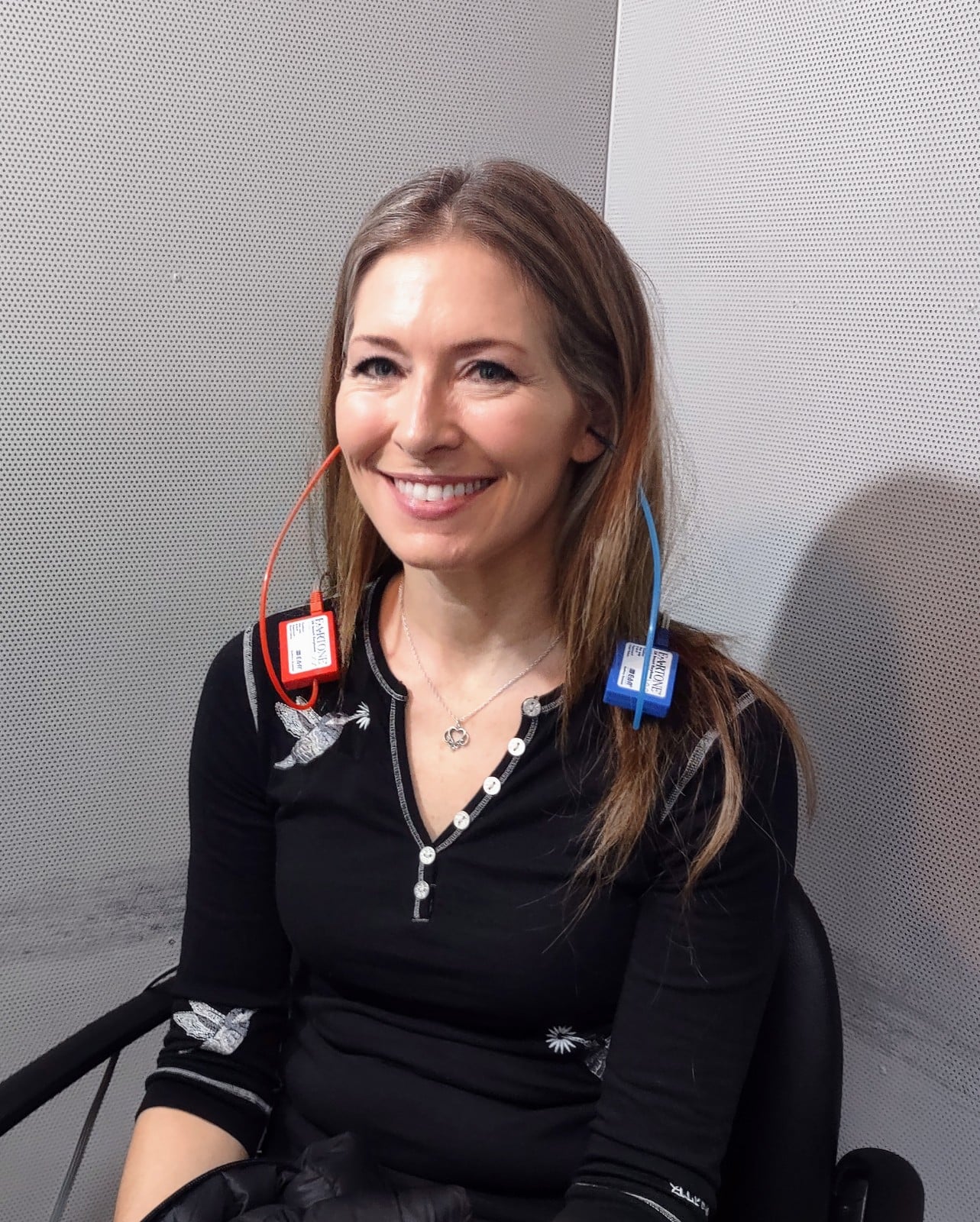
2. You want in-person support
For people who are new to hearing aids or have underlying medical conditions that affect their hearing, the in-person support offered at hearing clinics could be a better route. These hearing aids are typically (though not always) more expensive than OTC brands sold online.
Bottom line
Affordable hearing aids have many benefits, one of which is the low price. But they’re not for everyone.
If sticking to a budget is important for you, our team has outlined the best affordable hearing aids to simplify your search. We chose Audien as the “Best Value” hearing aids. MDHearing is our “Most Versatile Budget Hearing Aid” based on its variety of models and technology to choose from. If you’re looking for a budget-friendly hearing aid with Bluetooth, we recommend LINK by Eargo. Lexie is our top pick among OTC hearing aid brands. For robust customer support, Jabra Enhance may be a good choice for its one-on-one video calls with an audiology team. Finally, if you’re seeking customizable prescription devices with better sound clarity technology, the Signia Silk may be the best inexpensive hearing aid for you.
Frequently asked questions
While there is no single best hearing aid, some affordable models with lower prices include Audien, MD Hearing and Jabra Enhance. But the ultimate answer to this question depends on several factors, including your:
- Degree of hearing loss
- Lifestyle
- Budget
Hearing aids aren’t one-size-fits-all, which is why there are so many styles, features, and prices to choose from. Based on our team’s research and survey, we feel confident that all of the brands reviewed here provide quality hearing aids and reliable customer support.
The most affordable hearing aids on the market include Audien, MD Hearing, Eargo, Jabra Enhance, Lexie, and Signia.
You can buy affordable hearing aids directly from the manufacturer, from a discount network like Yes Hearing, or through charitable organizations like the Hearing Aid Project, which provides hearing evaluations and refurbished hearing aids at little or no cost. You can also buy affordable OTC hearing aids at stores and pharmacies that sell health devices. OTC hearing aids are also available on brand websites or even Amazon.
Yes, Audien sells a hearing aid for just under $100 (Atom for $99), though it doesn’t have many features. The Atom is rechargeable and you can adjust the volume on the device with a small screwdriver, but it doesn’t have directional microphones, which help you to hear better in noisy locations, and it doesn’t have a smartphone app to adjust your hearing aid settings.
The average cost of a good hearing aid is $4,600. [2] The White House. FDA Takes Action to Deliver Lower-Cost, Innovative Hearing Aids to Millions More Americans. Found on the internet at https://obamawhitehouse.archives.gov/blog/2016/12/07/fda-takes-action-deliver-lower-cost-innovative-hearing-aids-millions-more-americans Of the most affordable hearing aid brands we’ve reviewed, the average price is $1,090 per pair for the basic models, a savings of more than $3,500 compared to the average hearing aid price.
Yes, inexpensive hearing aids work. Note, though, that the lower the cost is for a hearing aid, the more basic its capabilities will be—you may not have as many sound environments or channels to switch between, Bluetooth streaming, or customizable features. But they can get the job done for mild to moderate hearing loss.
As hearing aids increase in price, so do their sound technology features. This means that more expensive hearing aids may be able to offer you a more advanced hearing solution compared to the more basic, inexpensive devices on the market.
Hearing aids are considered medical devices and are used to treat hearing loss, while hearing amplifiers, or personal sound amplification products (PSAPs), are not. The FDA regulates the manufacture and sale of hearing aids.
PSAPs are used for recreational purposes to amplify all sounds equally. Hunters, bird watchers, and concert attendees sometimes use them so they can hear everything in their environment better. The FDA does not regulate PSAPs.
PSAPs are cheaper than hearing aids but aren’t designed to be a cheaper alternative to hearing aids. These devices cannot be modified to meet a certain hearing profile the way hearing aids can be. PSAPs are fine for recreational use by people with normal hearing, but they are not a good alternative to hearing aids for someone with hearing loss.
Costco sells prescription and non-prescription hearing aids. Its prices are lower due to a combination of its volume purchases and distribution network. It also has a store-in-store model, which avoids the overhead and marketing costs that private practices and clinics have.
To get hearing aids for free, check if your insurance, VA benefits, or Medicaid cover them. Non-profits, community programs, and hearing aid banks may also provide them for free. Consult your audiologist for local resources and eligibility.
Have questions about this review? Email us at reviewsteam@ncoa.org.
Sources
- Food and Drug Administration. Medical Devices; Ear, Nose, and throat Devices; Establishing Over-the-Counter Hearing Aids. August 17, 2022. Found on the internet at: https://www.federalregister.gov/documents/2022/08/17/2022-17230/medical-devices-ear-nose-and-throat-devices-establishing-over-the-counter-hearing-aids
- The White House. FDA Takes Action to Deliver Lower-Cost, Innovative Hearing Aids to Millions More Americans. Found on the internet at https://obamawhitehouse.archives.gov/blog/2016/12/07/fda-takes-action-deliver-lower-cost-innovative-hearing-aids-millions-more-americans
- MDHearing. MDHearing Volt Max. Found on the Internet at https://www.mdhearingaid.com/hearing-aids/mdhearing-volt-max/
- Johns Hopkins Medicine. The Hidden Risks of Hearing Loss. Found on the internet at https://www.hopkinsmedicine.org/health/wellness-and-prevention/the-hidden-risks-of-hearing-loss
- U.S. Food and Drug Administration. FDA Finalizes Historic Rule Enabling Access to Over-the-Counter Hearing Aids for Millions of Americans. Aug. 16, 2022. Found on the internet at https://www.federalregister.gov/documents/2022/08/17/2022-17230/medical-devices-ear-nose-and-throat-devices-establishing-over-the-counter-hearing-aids
- Medicare.gov. Hearing Aids. Found on the internet at https://www.medicare.gov/coverage/hearing-aids
- Healthcare.gov Health Insurance Marketplace. What’s a Health Savings Account? Found on the internet at https://marketplace.cms.gov/outreach-and-education/health-savings-account.pdf
- U.S. Department of Veterans Affairs. Rehabilitation and Prosthetic Services. Found on the internet at https://www.prosthetics.va.gov/psas/Hearing_Aids.asp
- Hearing Loss Association of America. Consumer Protection Laws. Found on the internet at https://www.hearingloss.org/wp-content/uploads/ConsumerProtectionLaws.pdf










